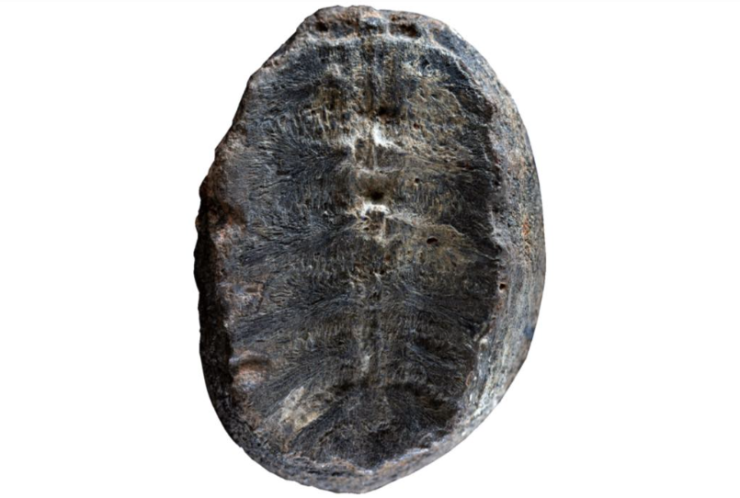A fossil thought for years to be a plant turned out to be a baby turtle, and puzzled researchers named it “Turtwig” after a Pokemon character who was half turtle and half plant.
From the 1950s to the 1970s, a priest named Father Gustavo Huertas collected rocks and fossils near a town in Colombia called Villa de Levya. Two of the specimens he found were small, rounded rocks patterned with lines that looked like leaves. He classified them as a type of fossilized plant.
But researchers re-examined these “plant” fossils and found that they were not plants at all, but the remains of baby turtle. The study was published in the journal Palaeontologia Electronica.
The plants in question were identified as ‘Sphenophyllum colombianum’ in 2003. The fossils came from Early Cretaceous rocks dating from 113 to 132 million years ago, during the dinosaur era. The fossils were rare at the time, as other known members of the genus Sphenophyllum disappeared more than 100 million years ago.
The fossils caught the attention of Dr. Fabiany Herrera, assistant curator of fossil plants at the Field Museum in the United States, and his student Mr. Palma-Castro.
“We went to the fossil collection at the Universidad Nacional de Colombia in Bogota, started looking at the plants, and as soon as we photographed them we thought, ‘this is very strange,'” Dr. Herrera said.
At first glance, the two inch diameter fossils appeared to be round nodules containing the preserved leaves of the Sphenophyllum plant. But the researchers noticed key features that weren’t quite right. “This was really surprising,” said Héctor Palma-Castro.



“It was difficult to decipher the shape and the edge of the leaf, when you look at it in detail, the lines seen in the fossils don’t look like the veins of a plant, I was sure it was most likely bone.”
Herrera reached out to Edwin-Alberto Cadena, a paleontologist who studies turtles and other vertebrates at the Universidad del Rosario in Bogota. He confirmed that the photographs definitely looked like the bony upper shell (carapace) of a turtle. When Prof. Cadena saw the scale of the photos, he said, ‘It’s remarkable, because it’s not just a turtle, it’s a juvenile specimen, very, very small’.”
Cadena and his student Diego Cómbita-Romero examined the specimens and compared them to the shells of both fossil and modern turtles. “When we first saw the specimen, I was very surprised, because the fossil didn’t have the typical marks on the outside of a turtle’s shell, it was a bit concave, like a bowl,” Romero said. At that moment we realized that the visible part of the fossil was the other side of the shell, we were looking at the part of the shell that was inside the turtle.”
Details on the turtle’s bones helped estimate how old it was when it died. The hatchling probably died when it was less than a year old.
In general, baby specimens of fossil turtles are really rare. This is because when turtles are very young, the bones in their shells are very thin, so they can easily disappear. “Discoveries like this are really special,” says Cadena.
What Padre Huertas thought were leaves and stems are actually modified ribs and vertebrae that make up the shell. The specimen was named ‘Turtwig’ after a Pokémon character that is half turtle and half plant. “In the Pokémon universe, you encounter the concept of combining two or more elements, such as animals, machines and plants,” Palma-Castro said. “In this case, Turtwig – a baby turtle with a leaf attached to its head.”
